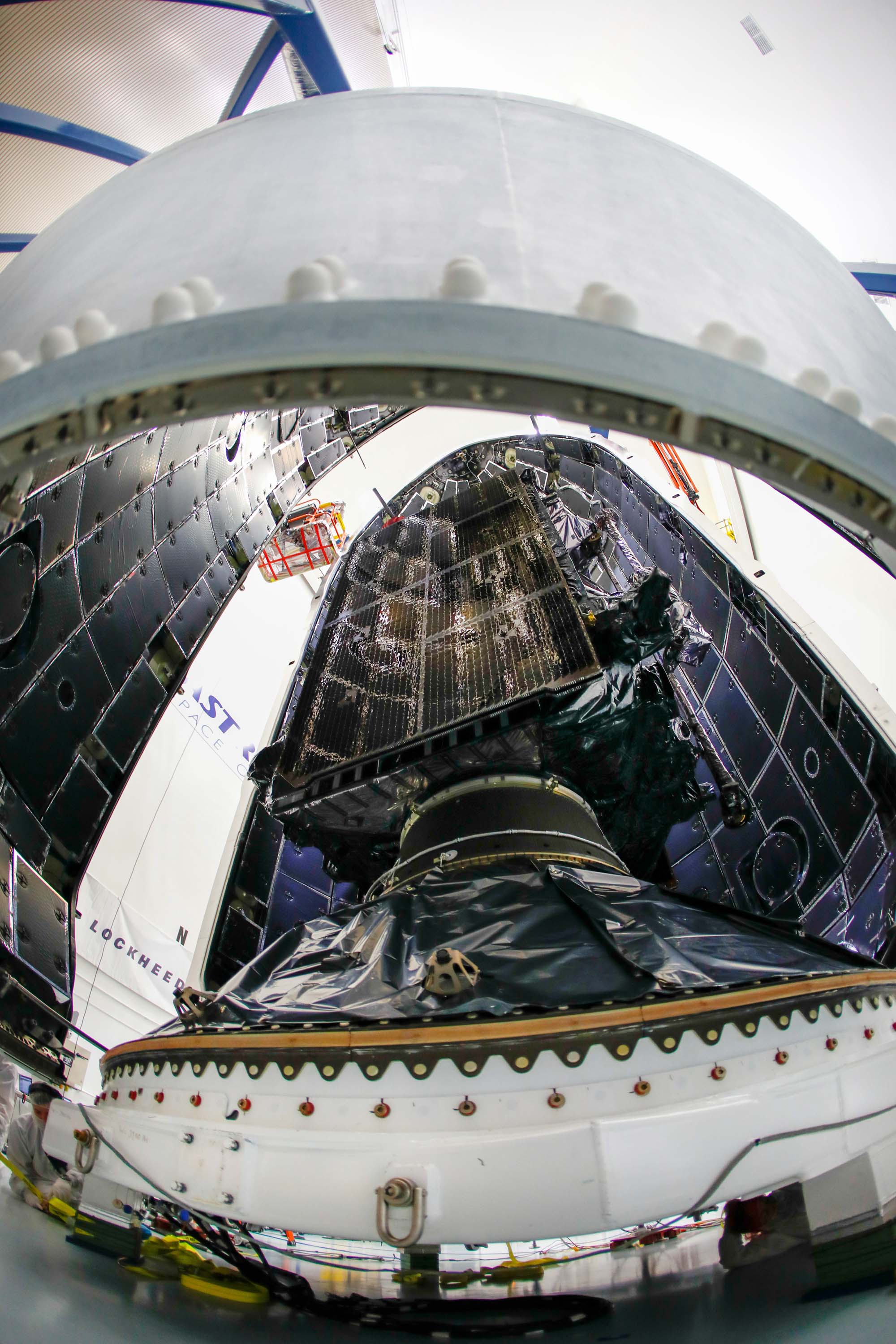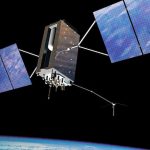 GPS III core structure at Lockheed Martin facility. Lockheed Martin photo
GPS III core structure at Lockheed Martin facility. Lockheed Martin photoThe launch of the first GPS III satellite could slip to as late as March 2017, further delaying a modernization program that already has been pushed back repeatedly by budget cuts and technical problems.
“The first GPS III launch is tentatively considered for the first half of FY17, based on booster availability and Air Force launch priorities,” a spokesman for the Space and Missile Systems Center told Inside GNSS.
The launch of the first GPS III satellite could slip to as late as March 2017, further delaying a modernization program that already has been pushed back repeatedly by budget cuts and technical problems.
“The first GPS III launch is tentatively considered for the first half of FY17, based on booster availability and Air Force launch priorities,” a spokesman for the Space and Missile Systems Center told Inside GNSS.
The most recently planned potential launch date for the initial GPS III flight was September 2016. The September launch opportunity, the spokesman noted, had also been considered for another high-priority mission.
The FY17 date, however, is distinctly later than the 2015 launch date planned just a few years ago — which itself was a delay when Gen. William L. Shelton, then-commander of Air Force Space Command, announced it.
“We’ll be ready to launch the first GPS III in 2015,” he told attendees at the 28th Annual National Space Symposium in May 2012.
Although the date has slipped, the spokesman said the Air Force does not currently “anticipate any impact to the GPS constellation sustainment needs.” Indeed, the current satellites remain remarkably healthy and a number of other launches — of GPS Block IIFs — are already in the queue.
The Air Force confirmed that the next GPS IIF would launch in March 2015, with another tentatively manifested for June 2015. The final two satellites in the series are now set to launch in September 2015 and January 2016.
These flights, and the still tentative FY17 GPS III launch date, were evaluated and approved by the Combined Launch Schedule Review Board at their October 2 meeting, the spokesman said. The GPS III launch “is not considered a delay,” said the spokesman, “since launch priorities are determined by the CLSRB and the schedule is fluid so early in the planning process.”
The CLSRB, which is chaired by the commander of the 14th Air Force, meets regularly to discuss all launch options. The next meeting is scheduled for March.
The delay in the launch, which is potentially quite marginal in terms of constellation maintenance, does change one key planning element — it pushes the expense for the launch from fiscal year 2016 into FY17. In the past the Air Force has used GPS launch delays to offset expenses elsewhere, reprogramming the funds to ease budget crunches in other programs.
The savings triggered by such a delay include the cost of the launch vehicle itself — potentially some $150 million, although it is unclear how much of that money could actually be retained by the GPS program office. The program office should be able to save the cost of the payload integration and any additional equipment or work tied to getting the spacecraft into orbit, one expert explained.
The decision to delay was enabled by the continued good health of the constellation and the delays in completion of the new ground system, OCX, a system needed to fully utilize the GPS III’s capabilities, said the source, who spoke on condition of anonymity to be able to discuss the matter freely. Saving money, however, was specifically an element in the launch delay decision, the expert said.
“They always have a place, a very useful spot, for any additional money,” the source told Inside GNSS.
The extra cash should come in handy. The Air Force, like every service, is facing serious budget pressures under sequestration, which comes into full force again starting in fiscal year 2016.
The program office is also weighing a recompete of the GPS III contract. A recompete could open up the possibility of switching prime contractors and modifying the program in ways that could reduce cost or add in new technology such as a digital navigation payload.
Whatever the final decision, even the process of holding a competition takes resources, another source pointed out. In fact, where the Air Force would find the money to support the recompete has been a topic of discussion in the industry since this spring, when the service asked companies to present their ideas and capabilities.
Despite the launch delay, prime contractor Lockheed Martin said it plans to deliver the satellite by the end of next year.
“Things remain at a steady, busy tempo for the GPS III program,” said a company spokesman. “Lockheed Martin is currently under contract for eight GPS III satellites and if you were standing in our GPS III Processing Facility today you would see GPS III space vehicles 1-4 already in progressive states of integration, assembly and test. Of course, our major focus right now is on delivering the first GPS III satellite to meet all requirements to the Air Force by the end of 2015.”





